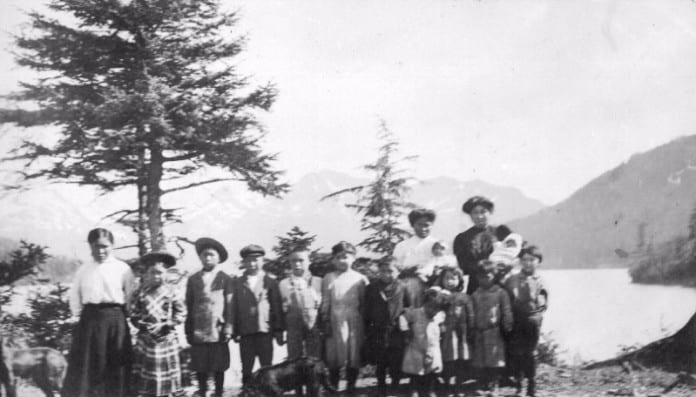
Natives at the nearby traditional village of Eyak began relocating to the new town to be near the canneries and by 1890. Odiak was a thriving town of 200 people. In 1892, the village of Alaganik was abandoned following a major epidemic and around this same time, the name changed from Odiak to Eyak. When gold is discovered on the Klondike in 1896, mining and transportation become important in the development region. The influx of prospectors up the Copper River begins to change the Eyak and Ahtna’s way of life. During the Alaskan expedition of U.S. Army Lt. Henry S. Allen it is notable that Allen and his men not only recorded information about the people they found, but became trusted enough that on one occasion the Taral Chief Nicolai, led him to the secret outcropping of nearly pure copper ore.
This photo came from the archives and collections of the Cordova Historical Society.













